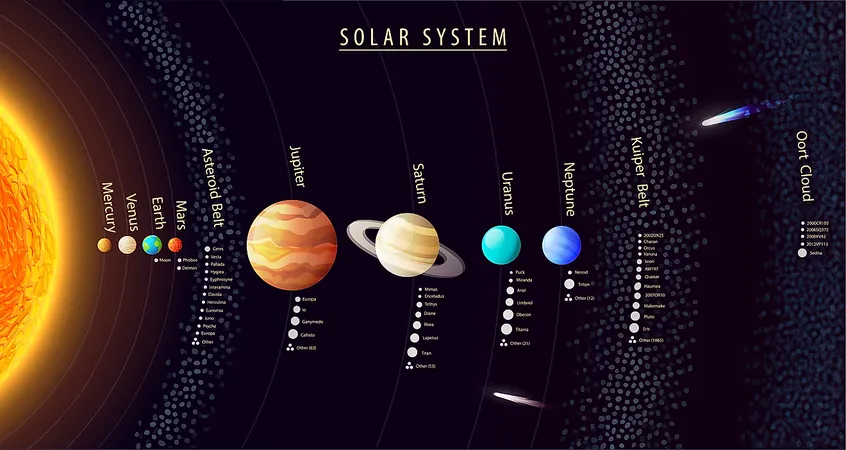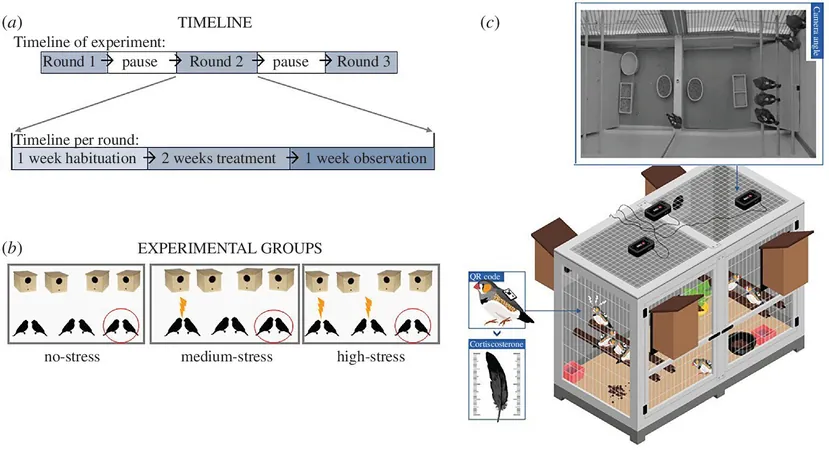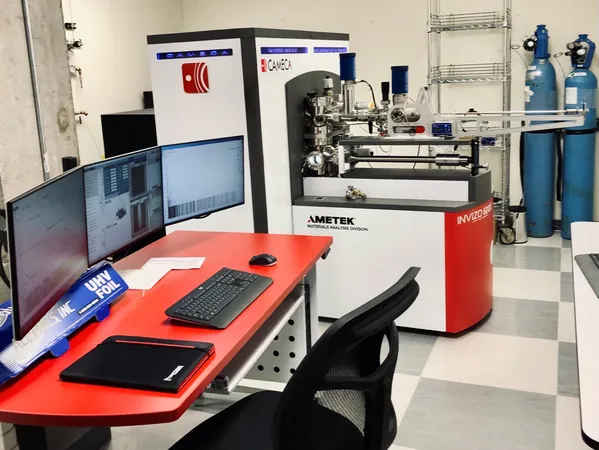
What Lies Beyond Pluto? The Mysteries of the Edgeworth-Kuiper Belt Await!
2024-11-07
Author: Liam
In the vast expanse of our solar system, the question of what lies beyond Pluto continues to ignite curiosity and drive scientific inquiry.
For over a decade now, astronomers and astrophysicists have focused their telescopes not just on the dwarf planet Pluto, the tenth most massive object in orbit around our Sun, but also on the enigmatic region that follows it: the Edgeworth-Kuiper Belt. This distant and icy neighborhood teems with celestial objects, ranging from small icy bodies to other dwarf planets, captivating the minds of scientists and space enthusiasts alike.
A Brief History of Discovery
The quest to understand our solar system begins with legendary figures like Percival Lowell, who theorized the existence of a ninth planet as early as 1906. His theories laid the groundwork for discoveries made by Clyde Tombaugh, who, in February 1930, used a makeshift telescope to pinpoint Pluto. Tombaugh's groundbreaking discovery triggered a wave of investigation into Pluto and its unique characteristics.
The hunt for objects beyond Pluto was significantly advanced by the pioneering ideas of Kenneth Edgeworth, who, in 1943, hypothesized about a disc of small celestial bodies beyond Neptune. Not long after, Dutch astronomer Jan Oort expanded this theory, suggesting the presence of a vast cloud of comets—a notion that many found intriguing. These contributions culminated in the work of Gerard Kuiper, whose influential paper on the origins of the solar system included the proposal of a belt of icy bodies now famously named after him.
Exploring the Edgeworth-Kuiper Belt
The Edgeworth-Kuiper Belt extends billions of kilometers past Neptune and serves as a cosmic repository for various icy bodies. With an average temperature plummeting to a staggering minus 200 degrees Celsius, this frigid region is home to a diverse array of objects, including the small contact binary Arrakoth and the dwarf planets Eris, Haumea, Makemake, and Quaoar.
Astronomers categorize the structures of these diverse bodies into three main groups:
1. Classical Objects: These have orbits resembling the predictions made by early astronomers, albeit proving not to be nearly as circular as once thought.
2. Resonant Objects: Syncing their orbits with Neptune, these bodies, like Pluto, complete specific cycles in tandem with Neptune's revolution around the Sun.
3. Scattered Objects: Characterized by their erratic and often highly elliptical orbits, these objects have been propelled far from Neptune, revealing the chaotic nature of our solar system's evolution.
To date, scientists have identified nearly 100,000 separate entities within the Edgeworth-Kuiper Belt, highlighting its significance and the potential for future discoveries.
What’s Next for Astronomical Exploration?
The exploration of this remote region took a giant leap forward with NASA’s New Horizons mission, which made history by flying past Pluto in 2015 and then venturing deeper into the Edgeworth-Kuiper Belt. In 2019, the spacecraft conducted a historic flyby of Arrokoth, capturing breathtaking images and data that continue to shed light on the formation and evolution of our solar system.
But wait—there’s more! As telescope technology advances and global interest in space exploration escalates, new missions may soon aim for unexplored sections of the Kuiper Belt. Discovering new types of objects could unlock secrets about the origins of our solar system and the conditions that fostered the creation of planets and moons.
The Edgeworth-Kuiper Belt is not just a cold, desolate wasteland; it is a vibrant population of ancient remnants that could tell us the story of our solar system's past. Who knows what astonishing secrets await us as we unveil the final frontiers of celestial discovery? Stay tuned, and remain curious!









 Brasil (PT)
Brasil (PT)
 Canada (EN)
Canada (EN)
 Chile (ES)
Chile (ES)
 España (ES)
España (ES)
 France (FR)
France (FR)
 Hong Kong (EN)
Hong Kong (EN)
 Italia (IT)
Italia (IT)
 日本 (JA)
日本 (JA)
 Magyarország (HU)
Magyarország (HU)
 Norge (NO)
Norge (NO)
 Polska (PL)
Polska (PL)
 Schweiz (DE)
Schweiz (DE)
 Singapore (EN)
Singapore (EN)
 Sverige (SV)
Sverige (SV)
 Suomi (FI)
Suomi (FI)
 Türkiye (TR)
Türkiye (TR)